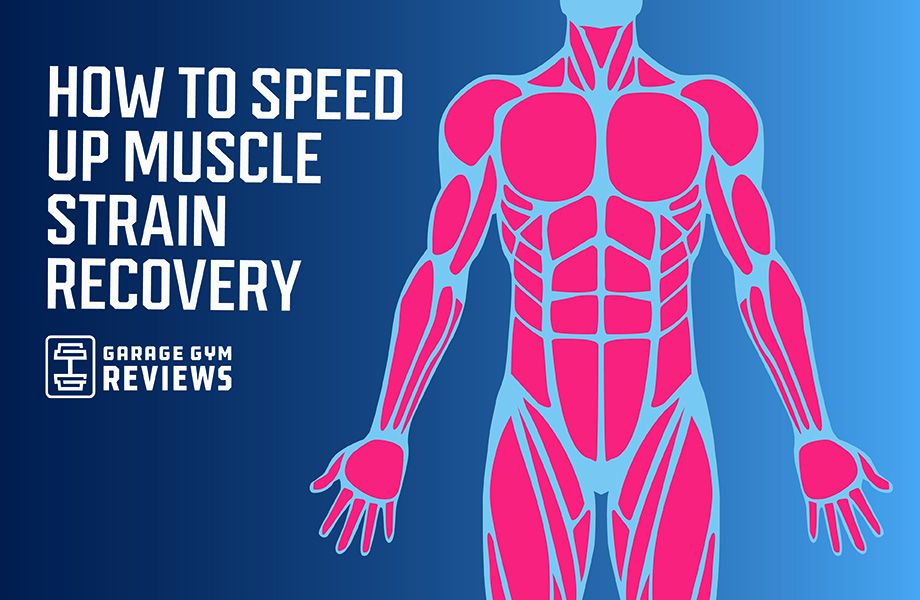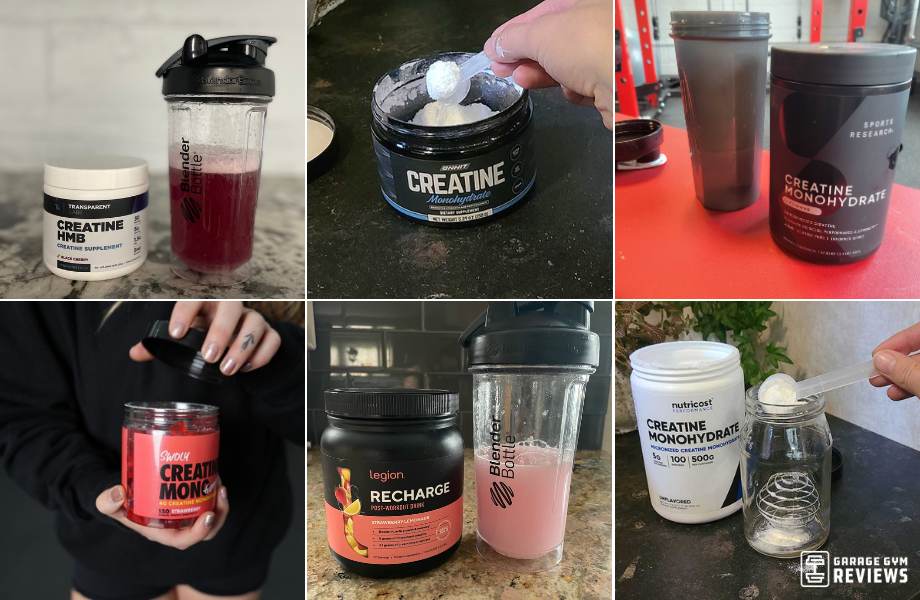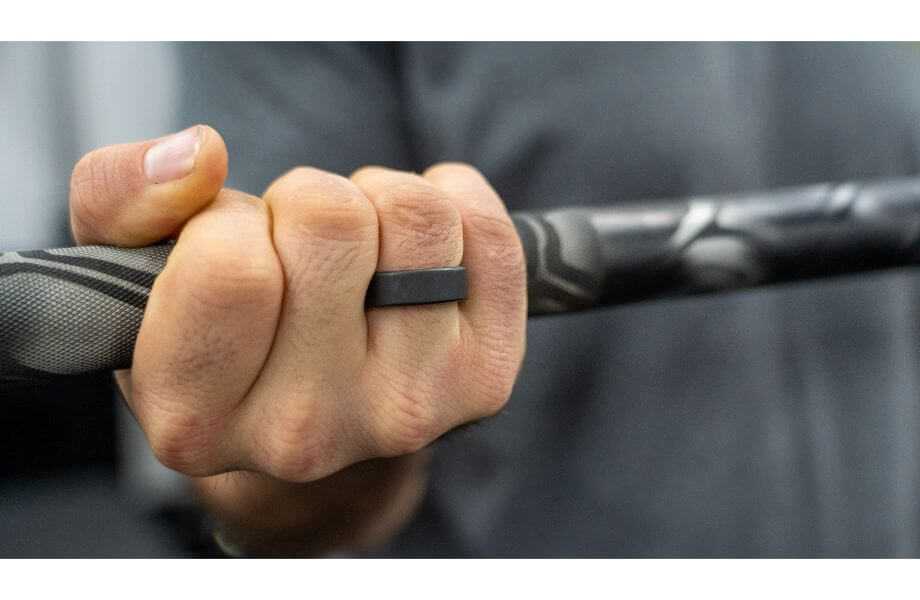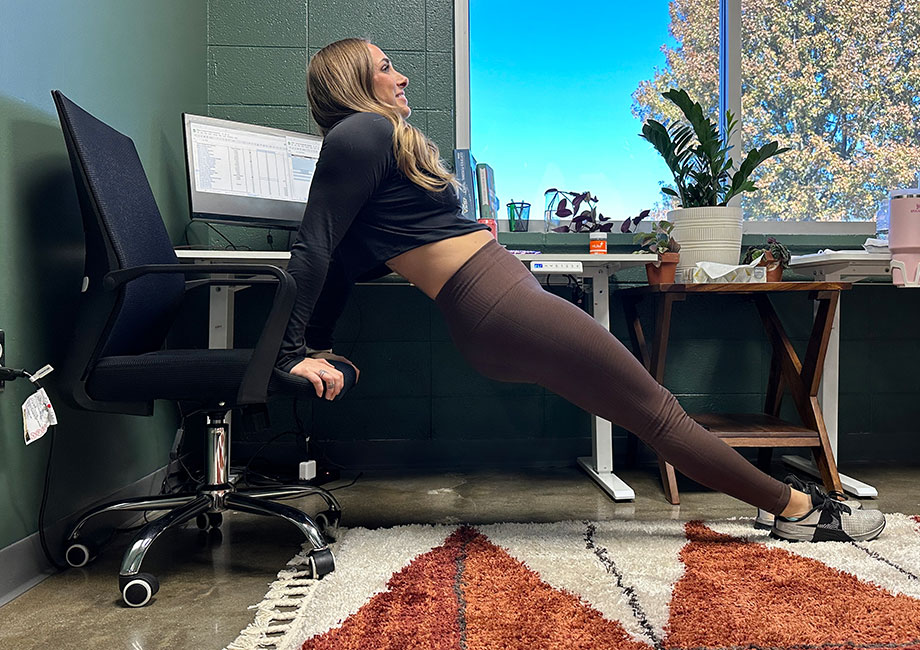You wake up, wipe the sleep out of your eyes, roll over to get out of bed, and—OUCH—you’re feeling yesterday’s workout.
You can endure a muscle strain for a number of reasons: overtraining, poor form, an accident. When it happens, you might experience a limited range of motion and even extreme muscle soreness, potentially (and frustratingly) derailing training plans as you move through the healing process.
If you’ve experienced this kind of muscle damage or want to learn a few tips about how to speed up muscle strain recovery, keep reading. We’ll share how you can quicken your recovery time so you can get back into the game.
Medical disclaimer: This article is intended for educational and informational purposes only. It is not a substitute for health or medical advice. For medical advice, contact an appropriate healthcare provider.
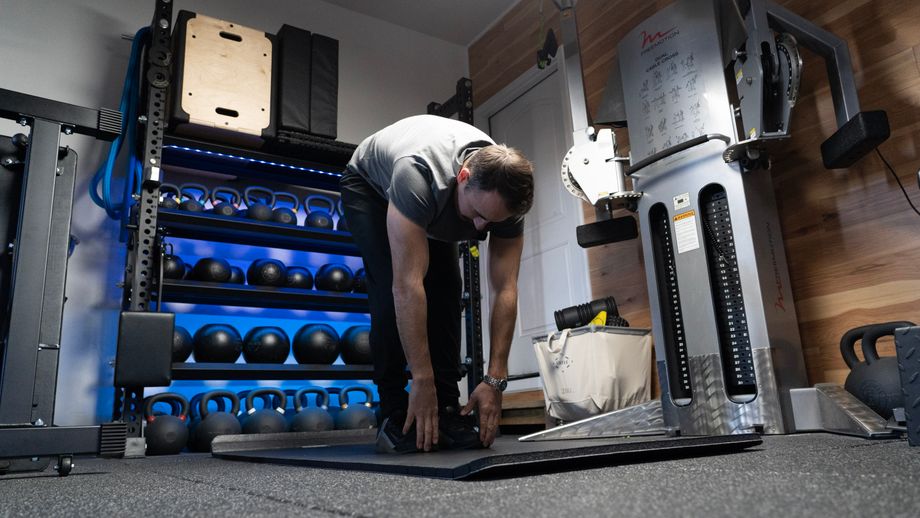
What Is a Pulled Muscle?
One of the most common injuries that athletes and fitness enthusiasts experience is a pulled muscle.
“A majority of my patients come to me for what can often be boiled down to a muscle strain of some sort,” said Dr. Mike Masi, a physical therapist at Masi Fitness in Charlotte, N.C. “The good news is that they are common and almost always treatable; the bad news is that it will require some degree of rest and recovery, which often is coupled with a change in exercise programming to accommodate this recovery.”
A 2012 study1 even revealed that strains and sprains accounted for 40% of all football injuries, and similar stats are available for other sports. However, despite muscle strains being a common injury, many people don’t know exactly what they are. In fact, they often assume that sprains and strains are the same, but they’re different.
Strains vs Sprains
According to Harvard Health Publishing2, a pulled muscle, also known as a muscle strain, is the tearing or stretching of your muscle fibers or tendons. Strains are most common3 in your back, hamstring, chest, calves, biceps, and abdominal muscles. A sprain4, on the other hand, is when the ligaments (bands of tissue that connect two bones together) are injured. The most common areas where people get sprains are their ankles and wrists.
The Severity of Strains
When doctors evaluate strains, they grade them based on their severity level. There are three different grades of strains2, which I’ll clarify below:
- Grade 1: This is considered a mild strain. Here, you’ll find that just a few muscle fibers are torn or stretched. The injured area will be sore and tender, but it still has normal strength.
- Grade 2: This is known as a moderate strain. The affected area in this situation will have several injured fibers and more significant muscle pain and tenderness. It’s not uncommon to also notice swelling and a loss of strength.
- Grade 3: This is the most severe type of strain. It happens when your muscle is torn all the way through and is usually identified by a “popping” sensation within the injured muscle. In this situation, the muscle tissue has likely ripped into two separate pieces or shorn off the tendon. As you might imagine, this is quite painful and will probably have a longer healing process.
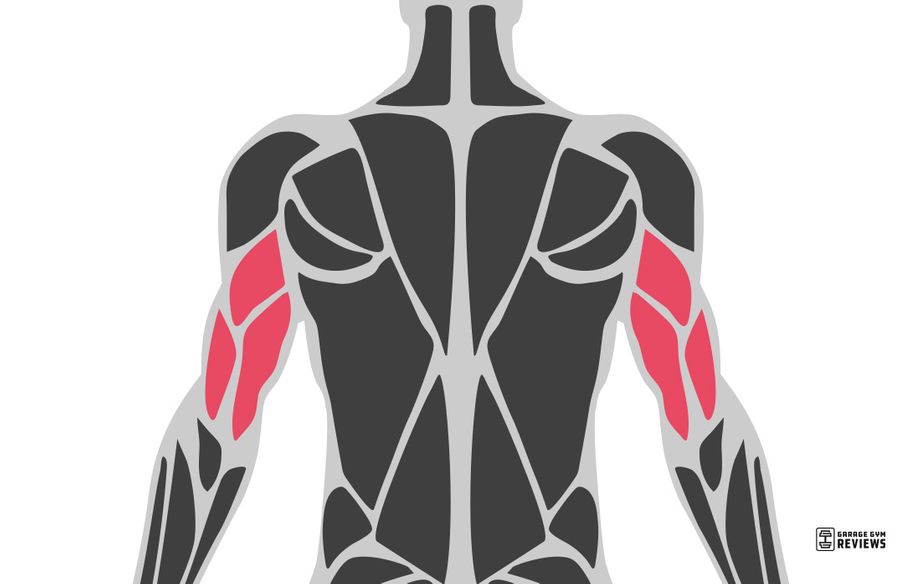
How Do You Know If You Have An Injured Muscle?
It would be hard to miss if you have an injured muscle because you’ll notice certain symptoms. However, the type of symptoms you have ultimately depends on the severity of the muscle injury. Sometimes, a muscle strain presents as just some soreness, and other times, people have a hard time moving the affected body part entirely. You could also experience muscle spasms, bruising, and swelling.
“If you can create your familiar pain by contracting the tissue, palpating the tissue, and stretching the tissue, then it is a safe bet to say that that tissue may be injured,” Dr. Masi explains. “Larger strains may be more obvious with notable swelling, bruising, and sometimes a palpable divot where you can see and feel the tear of the muscle fibers.”
What Causes a Muscle Strain?
After reading that, you probably want to know if you can prevent a muscle strain from happening in the first place. Although they’re not entirely avoidable, if you at least know what causes them, you can practice being more cautious.
According to Dr. Masi, here are the most common ways people suffer a muscle strain:
- Quick-start physical activities: Hurdling, running, and jumping could put you at a greater risk of experiencing a strain in certain muscle groups, especially the hamstrings.
- Overuse of muscles: Anytime you use a muscle to repeat the same motion over and over again, you risk a strain. This is the case whether you’re completing HIIT exercises, doing a daily activity like cleaning, or going to a job where you do heavy lifting. Too much of any one movement or exercise may put you at risk for injury.
- Failing to warm up before working out: Trust me, personal trainers and physical therapists don’t just tell you to warm up just for the heck of it. There’s a reason behind it. It doesn’t matter if you’re an occasional walker or a professional athlete; you must stretch and warm up prior to working out. A 2018 study5 notes that warm-ups increase muscle temperature and blood flow, reducing the risk of muscle and tendon injuries.
- Poor flexibility: When you lack flexibility, your muscle fibers are tighter, which is a good recipe for a muscle injury. Be sure to do stretching exercises ideally targeting tissues that are the prime movers for that particular workout or activity to loosen those muscles up so they can move more effectively.

10 Tips for Muscle Recovery
If preventing a muscle injury isn’t an option anymore because you’ve already got one, you’ll appreciate this section. Here are 10 tips for injury recovery that will hopefully get you back in the game in no time.
1. Protect the Affected Muscle
In the first few days after a serious injury, it is imperative that you protect your muscle by using assistive devices, like crutches, if applicable. You also don’t want to do any excessive lengthening6 of the damaged tissue as that could impact how the muscle tear heals.
2. Rest The Strained Muscle
A 2018 study7 revealed that restricting physical activity stops the muscle ends from additional retraction so that the intramuscular gap can reinforce itself. In addition, resting can relieve stress on the injured muscle, which should reduce pain. However, you don’t want to be immobilized too long, as that could cause excessive scarring8 at the injury site.
“The trick is to move without overdoing it,” Dr. Masi explains. “Movement will increase blood flow to the injured area, which assists with repair, however, move too forcefully too soon, and you’ll risk disruption of the healing process.”
3. Don’t Forget The Ice
In sports medicine, ice is the go-to in acute injuries for reducing pain and decreasing swelling7 at the site of the injury. But don’t make the mistake of applying the ice directly onto your skin. This can cause blistering and necrosis (tissue death), which is certainly something you want to avoid.
“Add multiple layers of cloth between the skin and the cold modality, frequently checking the skin, and apply for no longer than 20 minutes at a time,” Dr. Masi advises.
4. Do Soft Tissue Compression
Another thing you could do following a muscle injury is use elastic compression bandages7. Initially, it helps with reducing intramuscular bleeding, but over time it decreases swelling. You must be mindful of how tight you have the compression bandages, though.
In the beginning, they may be tighter to reduce swelling, but over time, they should be loosened to avoid imminent compartment syndrome. Such a situation could result in compromised circulation and a potential loss of soft tissue9.
5. Elevate the Injured Muscle
Another essential part of muscle recovery is elevation. Although this hasn’t been as thoroughly researched, it’s suggested that by raising the impacted muscle above the level of your heart, you can decrease swelling and hydrostatic pressure8.
Movement will increase blood flow to the injured area, which assists with repair, however, move too forcefully too soon, and you’ll risk disruption of the healing process.
Dr. Michael Masi, PT, DPT, OCS, SCS, CSCS
6. Anti-inflammatory Drugs Can Help Too
NSAIDS8, like Ibuprofen, help prevent an over-reactive inflammatory response following injury and has a pain-relieving benefit as well. Naturally, when our bodies are trying to repair damaged tissue, small proteins known as cytokines approach the scene with cells. Although this is good, it causes pain and swelling that affects our range of motion. Usually, over-the-counter NSAIDS can help combat this, but your doctor may write you a prescription in more severe cases.
7. Keep Your Stress Level Down
Resting your body is essential, but giving your mind a break from stress is also critical when trying to heal, although I know this is much easier said than done. In 201410, the Yale Stress Center found that higher stress levels correlated with poorer muscle recovery. They believe that stress hormones are likely the culprit, as they boost cellular inflammation, which can slow down the healing process.
8. Catch Some Zzz’s
Some folks say if you snooze you lose, but we disagree, especially when it comes to healing a strained muscle. Several biological processes happen while we sleep, including cell repair and the release of necessary proteins and hormones. When you fail to get adequate rest, you sacrifice getting the hormones you need to rebuild and repair muscle11.
9. Eat Food That Helps With Muscle Repair
In order for an injury to adequately heal, your body needs proper nourishment. Therefore, ensure you eat plenty of fruits and vegetables that are rich in antioxidants. In addition, don’t forget your protein, which can be found in meat, fish, milk, and more. Some people even consume protein supplements to ensure they get their protein fix for the day.
According to the National Library of Medicine12, we need protein to repair cells and make new ones, so you definitely want to make sure you’re eating enough following an injury.
“Also, avoid intentionally targeting calorie deficits while in recovery, as this creates a catabolic environment during a time calling for an anabolic response,” Dr. Masi warns.
10. Work With a Physical Therapist
Getting physical therapy for a strain is also something to consider, especially in moderate and severe cases. A physical therapist may have you complete different therapeutic exercises that’ll help you strengthen your injured muscle. Some treatments may even involve using heat and ice packs to control your pain and swelling better. Ultimately, this approach aims to help you decrease symptoms and restore function, so physical therapy might be worth a try.
A therapist can also help you identify the root cause of the muscle strain and may help re-prioritize your goals during the recovery process. This may help athletes stay active, make progress in other areas, and mitigate losses in strength and performance that are often experienced during long periods of rest.
Most states are direct-access states, meaning you can walk into a physical therapy clinic without needing an order from a physician first. And PTs are trained to screen for issues that may warrant getting more extensive testing or imaging. Going to a physical therapist first may be the best way to save you time and money.
Final Takeaway: Muscle Strain Recovery
Nobody wants to experience a muscle injury, but if it happens, you need to know what to do to make yourself better. We’ve offered 10 suggestions that we believe will speed up the muscle strain recovery process, but understand that there are no guarantees.
Recovery can take time, and you don’t want to rush it and end up potentially injuring yourself again. Typically, people with mild or moderate strains will recover within two to three weeks13, while a severe strain could take several months. Properly taking care of yourself could reduce your recovery time. However, until then, listen to your doctor and your body, and remind yourself that you’ll be back at it in no time.
Muscle Strain Recovery: Q&A
What Helps Muscle Strain Heal Faster?
The PRICE method, which stands for Protect, Rest, Ice, Compress, and Elevate, is one way to get on the right track with healing. Of course, there’s no guarantee that it’ll make you heal faster, but it’s a method followed often in sports medicine to help athletes.
Can a Pulled Muscle Heal in three days?
If it’s very mild, a pulled muscle could heal in three days, but I recommend that you take caution. Speak with your doctor or physical therapist before going right back into what caused the strain in the first place. If you go back too soon, you risk suffering an even greater injury.
How Long Does a Strained Muscle Take to Heal?
It truly depends on the severity of the strained muscle and on the level of function you are trying to return to. Walking or climbing stairs versus full sprinting/hurdling require wildly different demands on the body. Mild to moderate strains could heal within a few days to a few weeks. Severe strains will take a bit more time, though, because the muscle has likely been torn all the way through.
References:
- Saal JA. Common American football injuries. Sports Medicine. 2012;12(2):132-147. doi:10.2165/00007256-199112020-00005
- Muscle strain. Harvard Health. https://www.health.harvard.edu/a_to_z/muscle-strain-a-to-z#:~:text=This%20strain%20tears%20the%20muscle,%2C%20swelling%2C%20tenderness%20and%20discoloration. Published October 20, 2020. Accessed November 22, 2023.
- Muscle strains: Causes, symptoms, treatment & faqs. Cleveland Clinic. https://my.clevelandclinic.org/health/diseases/22336-muscle-strains. Accessed November 22, 2023.
- Strains | sprains. MedlinePlus. https://medlineplus.gov/sprainsandstrains.html. Accessed November 22, 2023.
- Park HK, Jung MK, Park E, et al. The effect of warm-ups with stretching on the isokinetic moments of collegiate men. J Exerc Rehabil. 2018;14(1):78-82. Published 2018 Feb 26. doi:10.12965/jer.1835210.605
- Maffulli N, Del Buono A, Oliva F, et al. Muscle Injuries: A Brief Guide to Classification and Management. Transl Med UniSa. 2014;12:14-18. Published 2014 Sep 1.
- Hotfiel T, Seil R, Bily W, et al. Nonoperative treatment of muscle injuries – recommendations from the GOTS expert meeting. J Exp Orthop. 2018;5(1):24. Published 2018 Jun 22. doi:10.1186/s40634-018-0139-3
- Delos D, Maak TG, Rodeo SA. Muscle injuries in athletes: enhancing recovery through scientific understanding and novel therapies. Sports Health. 2013;5(4):346-352. doi:10.1177/1941738113480934
- Acute Compartment Syndrome. National Library of Medicine. https://www.ncbi.nlm.nih.gov/books/NBK448124/. Accessed November 22, 2023.
- Stults-Kolehmainen MA, Bartholomew JB, Sinha R. Chronic psychological stress impairs recovery of muscular function and somatic sensations over a 96-hour period. J Strength Cond Res. 2014;28(7):2007-2017. doi:10.1519/JSC.0000000000000335
- Chennaoui M, Vanneau T, Trignol A, et al. How does sleep help recovery from exercise-induced muscle injuries?. J Sci Med Sport. 2021;24(10):982-987. doi:10.1016/j.jsams.2021.05.007
- Protein in Diet: MedlinePlus medical encyclopedia. MedlinePlus. https://medlineplus.gov/ency/article/002467.htm#:~:text=Every%20cell%20in%20the%20human,%2C%20teens%2C%20and%20pregnant%20women. Accessed November 22, 2023.
- Dueweke JJ, Awan TM, Mendias CL. Regeneration of Skeletal Muscle After Eccentric Injury. J Sport Rehabil. 2017;26(2):171-179. doi:10.1123/jsr.2016-0107


